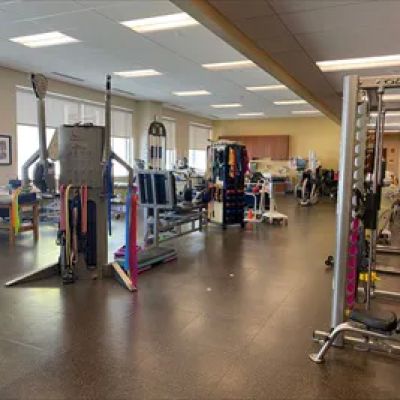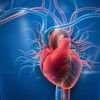Heart Disease and Physical Therapy: Benefits and Options
Heart disease is one of the leading causes of death worldwide, and its impact on individuals can be devastating. However, advances in medicine and treatment options have allowed many people to manage heart conditions effectively and lead fulfilling lives. One of the key components of heart disease recovery and prevention is physical therapy. In this article, we will explore the benefits of physical therapy for heart disease patients, the different types of therapy available, and how it can help individuals regain their health and improve their quality of life.

1. The Importance of Physical Therapy in Heart Disease Management
Physical therapy plays a vital role in the management of heart disease. When someone is diagnosed with a heart condition, their doctor may recommend a comprehensive approach to treatment, including lifestyle changes, medications, and physical therapy. The goal of physical therapy for heart disease is to strengthen the heart, improve circulation, and enhance overall cardiovascular health.
Physical therapy for heart disease typically involves exercises that focus on improving endurance, strength, flexibility, and overall function. These exercises are designed to reduce the risk of complications and improve the patient's ability to perform daily activities. In addition to physical benefits, therapy can also have a significant impact on mental health, helping patients manage the stress and anxiety often associated with heart disease.
Atlanta Heart Specialists
atlanta heart specialists
4375 Johns Creek Pkwy #350, Suwanee, GA 30024, USA

2. How Physical Therapy Helps with Recovery
Recovery from heart disease is a long process that requires time, effort, and dedication. Physical therapy helps speed up recovery by gradually rebuilding strength and improving cardiovascular fitness. A heart attack or surgery like bypass surgery can weaken the heart and make daily tasks difficult, but physical therapy helps patients regain strength safely and effectively.
For example, a person recovering from heart surgery may struggle with fatigue, shortness of breath, and muscle weakness. Physical therapy can include tailored exercises that improve endurance, increase mobility, and rebuild muscle strength. Over time, patients can experience significant improvements in stamina, flexibility, and overall well-being, which helps them return to regular activities with greater confidence and ease.
3. Types of Physical Therapy for Heart Disease
There are several different types of physical therapy programs that can be used to manage heart disease. The specific type of therapy will depend on the individual’s condition, recovery stage, and overall health goals. Some of the most common types of physical therapy for heart disease include:
- Cardiac Rehabilitation: This is a structured program designed to help people with heart disease recover after a cardiac event such as a heart attack, heart surgery, or heart failure. It includes supervised exercise, education on heart health, and counseling on diet and lifestyle changes.
- Endurance Training: Endurance training focuses on improving the cardiovascular system’s ability to handle physical activity. This often includes aerobic exercises such as walking, cycling, or swimming that increase heart rate and improve stamina.
- Strength Training: Strength training exercises help build muscle mass, which is important for overall strength and endurance. This type of therapy helps patients regain physical function and independence after experiencing weakness or fatigue due to heart disease.
- Stretching and Flexibility Exercises: These exercises improve range of motion, prevent stiffness, and promote circulation. They are particularly beneficial for individuals who have been sedentary or recovering from surgery, helping to reduce discomfort and improve movement.
Each of these therapies can be incorporated into a personalized treatment plan based on the patient’s needs and capabilities. A qualified physical therapist will assess the individual’s health and create a tailored exercise program to maximize recovery and promote long-term health.
4. Benefits of Physical Therapy for Heart Disease
Physical therapy offers numerous benefits for individuals living with heart disease. Here are some of the most significant advantages:
- Improved Cardiovascular Health: Regular exercise helps strengthen the heart, improve circulation, and reduce the strain on the cardiovascular system. This can lead to improved heart function and a reduced risk of future heart-related events.
- Increased Strength and Endurance: Physical therapy can help patients regain strength, improve stamina, and increase overall fitness. This is essential for maintaining an active lifestyle and improving daily functionality.
- Better Quality of Life: As patients progress through physical therapy, they often notice a significant improvement in their overall quality of life. They experience less fatigue, more energy, and greater independence in performing everyday tasks.
- Reduced Stress and Anxiety: Managing a heart condition can be mentally challenging, but physical therapy can help alleviate anxiety and stress by improving mood, promoting relaxation, and boosting self-confidence.
- Lower Risk of Complications: By strengthening the heart and improving physical health, physical therapy can help lower the risk of complications such as heart failure, stroke, and high blood pressure.
5. The Role of a Physical Therapist in Heart Disease Recovery
A physical therapist plays a crucial role in helping patients recover from heart disease. They are trained professionals who specialize in movement, exercise, and rehabilitation. When working with individuals who have heart conditions, physical therapists assess the patient's current health, develop personalized treatment plans, and supervise exercise programs to ensure safety and effectiveness.
For example, if a patient has recently had heart surgery, the physical therapist will guide them through gentle exercises to gradually rebuild strength without overexerting the body. They will monitor vital signs such as heart rate and blood pressure, making adjustments to the exercise routine as needed to avoid strain on the heart.
Physical therapists also educate patients on heart-healthy behaviors, including the importance of diet, stress management, and other lifestyle changes that support overall cardiovascular health. By providing guidance and support, physical therapists help patients navigate the recovery process with confidence.
6. Real-Life Example: How Physical Therapy Helped with Heart Disease Recovery
Consider the story of James, a 58-year-old man who experienced a heart attack and underwent bypass surgery. Initially, James struggled with fatigue, shortness of breath, and a lack of motivation to return to normal activities. His doctor recommended enrolling in a cardiac rehabilitation program, which included physical therapy tailored to his specific needs.
Over the course of several months, James worked with a physical therapist to improve his strength, endurance, and flexibility. He started with low-impact exercises and gradually progressed to more intense activities, such as walking on a treadmill and performing strength training exercises. As his endurance improved, he began to feel more energetic and less anxious about his heart condition. Eventually, he was able to return to his daily activities, including playing with his grandchildren, a task he thought would be impossible after his heart attack.
James's experience highlights the importance of physical therapy in the recovery process and how it can help individuals regain confidence and independence after a heart-related event.
7. Why Physical Therapy is Essential for Heart Disease Prevention
While physical therapy is often associated with recovery, it also plays an essential role in the prevention of heart disease. Regular exercise, which is a key component of physical therapy, helps improve heart health, reduce risk factors such as high blood pressure and high cholesterol, and promote weight management. By incorporating physical therapy into a daily routine, individuals can significantly lower their risk of developing heart disease and other cardiovascular conditions.
For those at risk for heart disease, physical therapy can be an effective way to prevent the onset of symptoms or complications. Whether through cardiac rehabilitation programs or personalized exercise plans, physical therapy can help maintain heart health and reduce the likelihood of needing more invasive treatments in the future.
If you or someone you know is living with heart disease, it’s never too late to start incorporating physical therapy into your treatment plan. Reach out to a qualified physical therapist today to learn more about how therapy can help improve your health and quality of life.
SEO Title: Benefits of Physical Therapy for Heart Disease and How It Helps SEO Keywords: physical therapy, heart disease recovery, cardiac rehabilitation, benefits of physical therapy, heart health, recovery after heart attack SEO Description: Discover the benefits of physical therapy for heart disease, including how it aids recovery, improves strength, and reduces stress. Learn more about cardiac rehabilitation and its role in heart disease prevention.




















Deborah Heart and Lung Center
deborah heart and lung center
200 Trenton Rd, Browns Mills, NJ 08015, USA